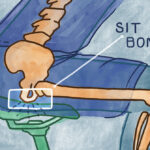If you’re a parent navigating the daily school run, you might be looking for safer, healthier, and more engaging ways for your children to get to school. Enter the “Bike Bus,” a concept gaining traction for its innovative approach to the school commute. Just like a traditional school bus, a bike bus transports children to school, but with a fun, active twist – everyone travels by bicycle. Led by adult volunteers, these organized group rides create a safer and more enjoyable journey for kids.
What is a Bike Bus?
Imagine a group of children cycling to school together, guided by responsible adults. That’s the essence of a bike bus. Think of it as a mobile, two-wheeled convoy, picking up students along a pre-planned route. Children join the bike bus at designated stops as it passes, creating a rolling, energetic group heading towards school. These aren’t spontaneous gatherings; bike buses are structured initiatives, often organized by parents, schools, or community groups to promote safe and active travel. The “bus driver” is typically a volunteer adult cyclist who leads the group, ensuring safety and maintaining a manageable pace for all participants.
The Myriad Benefits of Bike Buses
The appeal of bike buses extends beyond just a fun way to get to school. They offer a wealth of advantages for children, parents, and the wider community:
- Enhanced Safety: Safety in numbers is a key principle. A larger group of cyclists is more visible to motorists, significantly increasing the safety for children biking, especially on busy roads. This is particularly crucial during peak commute times when traffic congestion around schools is often heightened.
- Promotes Health and Fitness: In an era where sedentary lifestyles are a growing concern, bike buses encourage daily physical activity. Cycling to school becomes an integral part of a child’s day, fostering healthy habits and combating inactivity from a young age.
- Fosters Community and Social Interaction: Bike buses transform the school commute into a social event. Children ride with their friends and neighbors, fostering a sense of community and belonging. It provides a daily opportunity for social interaction and fun outside the classroom.
- Reduces Traffic Congestion and Pollution: By replacing car journeys with cycling, bike buses directly contribute to reducing traffic around schools. This not only makes the school environment safer but also reduces carbon emissions, contributing to cleaner air and a healthier environment for everyone.
- Encourages Independence and Responsibility: Participating in a bike bus can instill a sense of independence and responsibility in children. They learn road safety skills, become more aware of their surroundings, and take ownership of their journey to school.
- Equity and Accessibility: Bike buses can be particularly beneficial in areas where transportation options are limited. They offer a free and accessible mode of transport to school, ensuring that all children, regardless of their family’s circumstances, have a safe and reliable way to get to their education.
Bike Buses in Action: Real-World Examples
The bike bus concept isn’t just theoretical; it’s being successfully implemented in communities worldwide. A prominent example is Sam Balto, a physical education teacher in Portland, Oregon. His bike bus has grown into a massive movement, involving hundreds of students and parents. Balto’s enthusiastic approach, documented on social media, has inspired countless others to start bike buses in their own neighborhoods. These real-world examples showcase the feasibility and positive impact of bike buses, demonstrating how a simple idea can transform the daily school commute and build stronger, healthier communities.
Getting Started with a Bike Bus
Inspired to bring a bike bus to your neighborhood? Starting one might be simpler than you think. Key steps include:
- Gauge Interest: Talk to other parents, school administrators, and community members to assess interest and gather potential volunteers.
- Plan a Route: Design a safe and practical route, considering traffic flow, safe crossing points, and convenient meeting points for participants.
- Recruit Volunteers: Adult volunteers are essential for leading and supervising the bike bus.
- Promote and Communicate: Spread the word about the bike bus to families in your community and establish clear communication channels for schedules and updates.
- Prioritize Safety: Establish safety guidelines, including helmet use, bike checks, and rules of the road.
Conclusion: Pedal Towards a Better School Commute
Bike buses represent a refreshing and effective approach to the school commute. They are more than just a mode of transport; they are a vehicle for promoting safety, health, community, and environmental sustainability. As more communities embrace active travel and seek innovative solutions for school transportation, the bike bus movement is poised to grow, transforming the daily journey to school into a positive and enriching experience for children everywhere. By choosing to pedal together, we can create safer streets, healthier habits, and brighter futures for our children.

